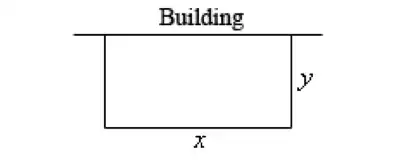This example is from Paul's Online Notes for Calc I.
You have $500$ feet of fencing material and you want to enclose a field with a fence. A building is on one side of the field (and so won't need any fencing). Determine the dimensions of the field that will enclose the largest area.

Maximize: $\;\;\;A=xy$
Constraint: $\;\;\;500=x+2y$
$x=500-2y \implies A(y)=(500-2y)(y) \implies A(y)=500y-2y^2$
Then, for determining the interval, he states:
Now we want to find the largest value this will have on the interval [$0,250]$. Note that the interval corresponds to taking $y=0$ (i.e. no sides to the fence) and $y=250$ (i.e. only two sides and no width, also if there are two sides each must be $250$ ft to use the whole $500$ft).
My Questions:
$\textbf{1.}\;\;$ I don't understand his explanation for determining the interval...why is he considering no sides to the fence, which he labels as $y=0$, and only two sides and no width, which he labels as $y=250$? It seems like these numbers come from $2y(250-y) \implies y=0, y=250$, but I still don't understand why this is the case. How can you ignore dimensions when determining the domain?
$\textbf{2.}\;\;$ How do you know that the largest area will be rectangular? Why doesn't he choose to maximize a circle or square, for example?
Thanks.